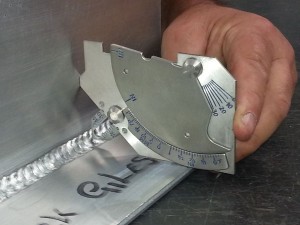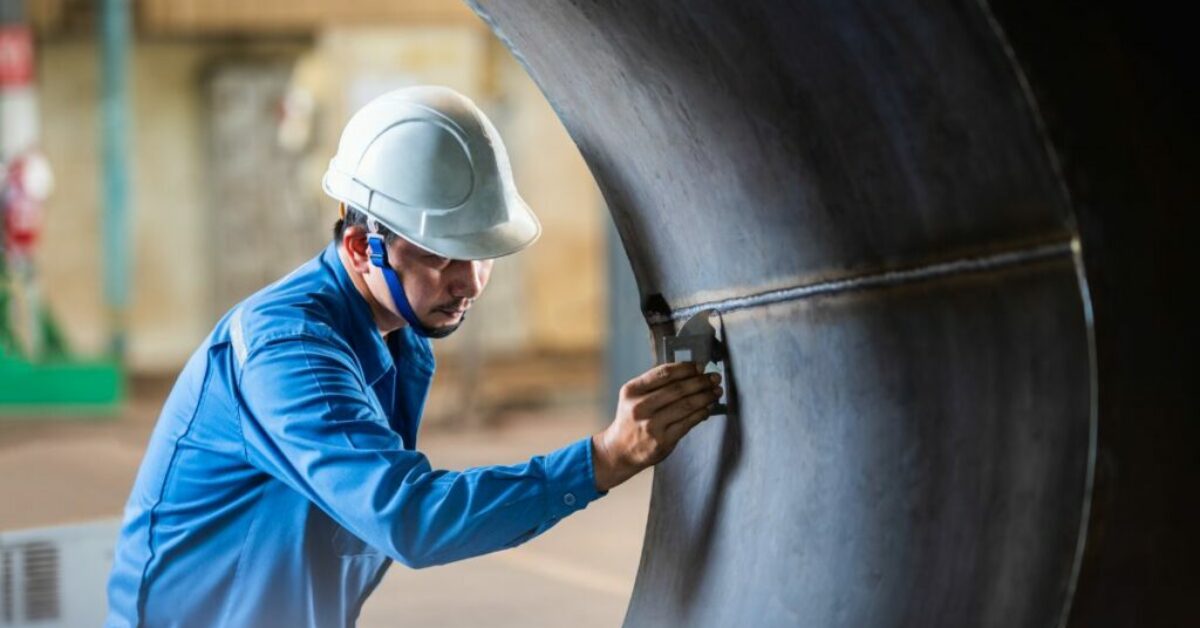Crucial Tips for Successful Welding Inspection Madison Solutions
Crucial Tips for Successful Welding Inspection Madison Solutions
Blog Article
Discovering Advanced Devices and Techniques for Accurate Welding Inspection
In the realm of welding assessment, the search of precision and integrity is critical, spurring the advancement of innovative tools and techniques. Technologies such as phased array ultrasonic screening and digital radiography are changing flaw discovery, offering unrivaled precision in defining welding defects. Laser scanning advancements and automatic assessment systems, furnished with man-made knowledge, are redefining the landscape by decreasing human error and boosting security procedures. As these advanced strategies remain to develop, they promise not just to transform evaluation techniques however also to elevate appealing questions about the future of quality control in commercial applications.
Ultrasonic Evaluating Technologies
Ultrasonic screening innovations often stand for the forefront of innovations in welding evaluation modern technologies. These innovations have actually dramatically enhanced the ability to detect and examine suspensions within bonded frameworks, ensuring boosted integrity and safety and security - Welding Inspection Madison. Ultrasonic testing utilizes high-frequency audio waves to permeate products, offering in-depth details about interior features without creating damage. The current advancements in this area have actually concentrated on raising precision, speed, and the capacity to analyze complex information.

Additionally, innovations in software application formulas for information analysis have enhanced the precision of problem detection and sizing. Automated ultrasonic screening systems currently provide high-resolution imaging, allowing in-depth analyses of weld high quality. These systems are commonly incorporated with advanced visualization tools, which help with the analysis of results.
Radiographic Inspection Methods
While ultrasonic screening innovations have set a high criterion in non-destructive examination, radiographic examination techniques proceed to play an integral duty in welding inspection by using one-of-a-kind insights right into product honesty. Radiographic screening (RT) employs making use of X-rays or gamma rays to pass through products, developing a radiograph that visually represents the interior framework of a weld. This imaging capacity is very useful for spotting subsurface flaws such as porosity, additions, and cracks that may not show up with surface area evaluations.
The process involves placing a radiation source on one side of the weld and a detector on the opposite side. Variations in material density and thickness affect the attenuation of the rays, generating a different image that specifically marks problems. RT is specifically advantageous for inspecting complicated geometries and thick sections where other techniques may fail.
In spite of its efficiency, radiographic assessment needs to be conducted with strict adherence to safety and security methods as a result of the hazardous nature of ionizing radiation. Furthermore, the analysis of radiographs calls for experienced personnel, as the quality of the evaluation directly affects the dependability of the assessment. Consequently, ongoing innovations in electronic radiography are improving picture quality and analysis efficiency, enhancing RT's essential duty in making certain weld high quality.
Laser Scanning Advances
Welcoming laser scanning technology in welding inspection has actually reinvented the assessment of weld top quality and integrity. This sophisticated method supplies a non-contact, high-resolution means of catching detailed 3D information of weld surfaces. Unlike conventional assessment techniques, laser scanning gives rapid information acquisition, considerably improving the performance and precision of weld assessments. The modern technology employs laser beam of lights to produce accurate 3D designs, which are essential for extensive evaluation of weld measurements, surface area irregularities, and potential problems.
Laser scanning advances have led to substantial enhancements in identifying and finding surface area flaws such as porosity, lack of combination, and damages. The high-resolution data makes it possible for inspectors to carry out extensive analyses, guaranteeing that welds satisfy rigid market standards. Moreover, this approach supports the development of electronic documents, facilitating long-term top quality guarantee and traceability.
In addition, laser scanning technology incorporates flawlessly with software program remedies created for automated flaw detection and analysis. The resultant data can be easily shared and assessed, promoting joint decision-making procedures. As industries proceed to demand greater standards for weld top quality, laser scanning remains at the leading edge, supplying unrivaled accuracy and effectiveness in welding examination.
Automated Assessment Systems

Automated examination systems offer the benefit of uniformity, getting rid of human error and you can look here subjectivity from the inspection process. They are made to run in different environments, from manufacturing floors to remote area websites, guaranteeing detailed protection. Welding Inspection Madison. These systems can be configured to abide by particular welding requirements and requirements, giving detailed reports and documentation for quality assurance functions
Additionally, the assimilation of cloud-based systems promotes the storage space and evaluation of substantial quantities of assessment information. This allows trend evaluation and anticipating maintenance, enabling makers to deal with potential problems prior to they intensify. The adoption of automatic assessment systems is a pivotal action towards boosting the dependability and performance of welding processes in commercial applications.

Enhancing Safety and Effectiveness
A considerable facet of enhancing security and performance in welding inspection depends on the assimilation of innovative technologies that simplify procedures and reduce dangers. The adoption of advanced non-destructive testing (NDT) approaches, such as ultrasonic screening, phased variety ultrasonic screening (PAUT), and radiographic testing, plays a crucial duty in guaranteeing structural integrity without jeopardizing the safety and security of the workers included. These methods permit for thorough examinations with marginal downtime, minimizing possible threats related to conventional approaches.
Additionally, the implementation of real-time data analytics and device discovering formulas has transformed the way assessment information is translated. By employing anticipating analytics, prospective flaws can be determined prior to they materialize right into important failures, making certain timely interventions and maintenance. This proactive strategy dramatically boosts operational performance and security in welding procedures.
Furthermore, remote examination technologies, including drones and robotic crawlers geared up with high-resolution cameras, make it possible for examiners to analyze hard-to-reach areas without exposing them to harmful problems. This not just enhances inspection accuracy however additionally minimizes human threat. By leveraging these advanced tools and techniques, sectors can attain higher security requirements and operational effectiveness, eventually causing more trusted and lasting welding inspection methods.
Verdict
The combination of advanced devices and techniques in welding assessment significantly boosts flaw detection and makes certain architectural stability. These developments not just boost evaluation effectiveness however likewise contribute to improved security and high quality assurance in industrial welding try this out applications.

Ultrasonic screening advancements regularly stand for the leading edge of advancements in welding inspection modern technologies.While ultrasonic testing innovations have established a high criterion in non-destructive assessment, radiographic inspection methods continue to play an integral function in welding examination by providing unique understandings right into material stability.Welcoming laser scanning innovation in welding inspection has changed the assessment of weld high quality and integrity. As markets proceed to demand higher criteria for weld redirected here quality, laser scanning stays at the leading edge, supplying unparalleled precision and performance in welding evaluation.
Automated assessment systems offer the benefit of uniformity, removing human mistake and subjectivity from the inspection procedure.
Report this page